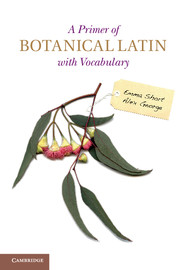Book contents
- Frontmatter
- Contents
- Preface
- Acknowledgements
- Introduction
- Part I Grammar
- 1 The noun
- 2 The adjective and the participle
- 3 The adverb
- 4 The preposition
- 5 The conjunction
- 6 The pronoun
- 7 The verb
- 8 Numerals, measurements (Stearn pp. 107–117)
- 9 Prefixes and suffixes
- 10 Miscellany
- Part II Exercises in translation
- Part III Translating
- Part IV Vocabulary
- References and further reading
- Index
8 - Numerals, measurements (Stearn pp. 107–117)
Published online by Cambridge University Press: 05 April 2013
- Frontmatter
- Contents
- Preface
- Acknowledgements
- Introduction
- Part I Grammar
- 1 The noun
- 2 The adjective and the participle
- 3 The adverb
- 4 The preposition
- 5 The conjunction
- 6 The pronoun
- 7 The verb
- 8 Numerals, measurements (Stearn pp. 107–117)
- 9 Prefixes and suffixes
- 10 Miscellany
- Part II Exercises in translation
- Part III Translating
- Part IV Vocabulary
- References and further reading
- Index
Summary
Like us, the Romans had both words and numerals for numbers, and had both cardinal numbers – answering the question ‘How many?’ (one, two. . .) – and ordinal numbers, answering the question ‘Which one in a series?’ (first, second. . .). A third set of numerals is the distributive adjectives answering the question ‘How many each?’ (one each, two each. . .). Roman numerals were in the form I, II, II, IV, V. . . X. . . C. . .. Hindu-Arabic numerals (1, 2, 3, 4, 5. . . 10. . . 100. . .) were developed in India in about the sixth century AD and arrived in Europe via the Arabs of North Africa during the Middle Ages.
In Latin, only the first three cardinal numerals – unus (1), duo (2), tres (3) – are declined (like adjectives). The others remain the same whatever the case and gender of the noun they are qualifying. In botanical descriptions it is easiest to avoid the words altogether by using numerals – and it saves space. This may be done regardless of the gender, number and case of the noun they are associated with.
- Type
- Chapter
- Information
- A Primer of Botanical Latin with Vocabulary , pp. 50 - 56Publisher: Cambridge University PressPrint publication year: 2013



